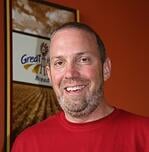If you follow this blog, you may know I enjoy running marathons, and you may be aware I generally follow a special whole food, low-sodium, macrobiotic-oriented diet. When I’m running marathons, though, I have to switch gears so that I have sufficient fuel to stay powered all the way through to the finish line. Here’s how I do it.
First of all, the goal is to avoid chemical-laden stuff like Power Bars or gels. And I want to keep things easy. Things I can normally do easily on my own, or within the confines of what is available at most events. Training for a marathon is great for your body, so it makes sense to keep things healthy by fueling your training with foods that are as natural as possible. I admit it is easy to just use Power Bars and Gatorade, but there is a better way.
A friend I used to do triathlons with once told me that training with me was like going back to kindergarten. Not being sure how to take that, I asked, “How?” She said, “Well, you make us eat all of the fun snacks we had back in those days. Peanut butter sandwiches for breakfast. Fruit and M&M's for snacks, with some occasional Fritos. And chocolate milk for dessert.” I had never thought of it that way but that is pretty much what I eat when I do long events. All natural (except for maybe the M&M's) and all purposeful.
Here’s the Kindergarten Diet:
Breakfast: You’ve surely heard that breakfast is the most important meal of the day, and nowhere is that more true than in the kindergarten diet. It consists of peanut butter on whole wheat. Specifically, Naturally Nutty’s Chocolate Almond Butter on our seeded whole wheat Dakota for me. You could add jelly or fruit if you like, but I go straight. That is all natural and full of long-lasting complex carbs. That sets the stage for the day, and from there I just add some simple carbs every hour to top off my fuel tank.
Hourly Snacks for Simple Carbs:
I do bananas or other available fruit when I can, with candy every third hour for variety. The bananas are okay-tasting, sufficiently high in sugar and calories, and full of the minerals and vitamins I need to keep going. I throw in M&M's (or Skittles) for variety because I can. It’s an executive kindergartner decision. Fun, tasty, and sufficiently full of nutrients. (Mind you, I am not talking about every day.…well into an intense training or marathon session I eat junk food for energy, and it works for me).
Fritos serve a specific purpose. They come in at mile 80 on a bike, or mile 20 in a marathon. They can’t be flavored Fritos. It has to be the originals. Before you laugh— go read the ingredient label. Original Fritos have just four simple ingredients. Yes, they are fried and salty, but after 80 or 20 miles you need some salt. Fritos are an easy and relatively healthy way to get it. No chemicals or junk. Just what you need. The flavored Fritos really are chemical-laden junk but original Fritos are okay for this specific purpose.
After the marathon, it's time for chocolate milk. Years ago, researchers tried to find something natural that mirrored the properties of the recovery drinks that were then on the market. Chocolate milk was the answer. Seriously, who doesn't want to reward themselves with a cold chocolate milk after burning thousands of calories? I have never seen any research that says fat matters there, so pick skim or whole or whatever you can get. I choose whatever is available with a bias toward skim.
That’s the kindergarten diet. It really shows how much diets have changed over the last 50 years. That was basically the default “kid diet” when I was a kid. Now? Not so much… and it goes a long way towards explaining some health issues.
Why am I writing about a marathon? Some of you may remember that I entered and was training for the New York marathon. It was yesterday. I had to scratch. Extreme temps are still a risk area for me and the wind chill was in a range I wasn't comfortable with. Nonetheless, I was ready and got up to 22 miles in training and feel great. Even though I don't have the event hardware to prove it, I consider this process a success. I proved I am healthy enough to do it but needed some luck with the environment. Nonetheless, I think we can call my recovery driven by real food complete and a success.
The Kindergarten Diet's not your speed? Try these posts from our Nutrition Specialist:
- How to Fuel Your Workouts with Whole Grains, Protein and More
- Micronutrients in Whole Grains and Real Food: Needed by Athletes!
- Whole Wheat Bread Helps You Refuel Effectively After a Workout
- Recovery: The Post-Workout Meal




